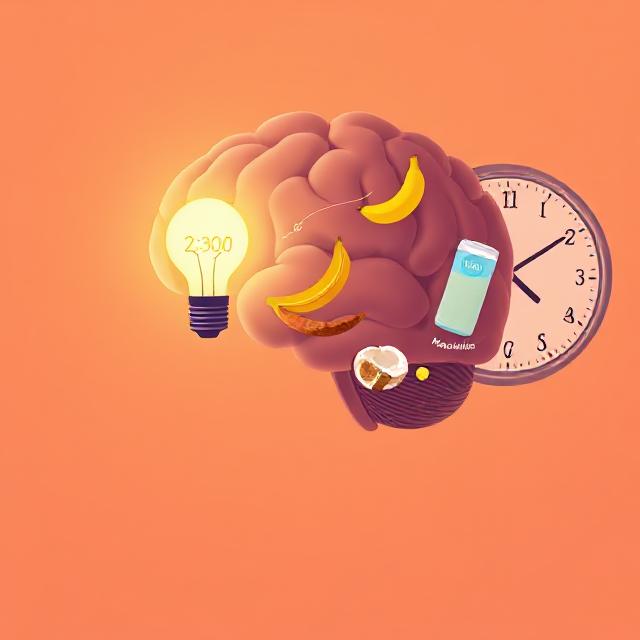
Table of Contents
Electrolyte Timing for Afternoon Slumps
The clock hits 2:30 PM. Your brain slows, your motivation dips, and your focus slips through your fingers. You reach for caffeine, maybe a sugary snack—but the crash just gets worse. What if the real cause of your afternoon slump isn’t fatigue or willpower, but electrolyte imbalance?
In this post, we’ll uncover how electrolyte timing can play a pivotal role in keeping your brain alert, your mood steady, and your cognition sharp—especially during that dreaded post-lunch dip.
Whether you’re studying, working, or pushing through long meetings, aligning your hydration strategy with your body’s circadian chemistry can eliminate the crash and reignite mental clarity.
🧠 Why Afternoon Slumps Happen
Afternoon fatigue isn’t random—it’s a predictable physiological dip triggered by several overlapping factors:
- Circadian rhythm drops in core alertness around 1–3 PM
- Insulin response from lunch may lower blood glucose availability in the brain
- Dehydration builds up after a full morning of light activity, talking, and breathing
- Electrolyte depletion quietly accumulates even without sweating
Most people blame blood sugar, but studies show that fluid and electrolyte status has an equally strong effect on alertness, working memory, and mood.
⚡ What Electrolytes Do for the Brain
Electrolytes are charged minerals—sodium, potassium, magnesium, and chloride—that allow neurons to fire, maintain pH balance, regulate blood flow, and support neurotransmitter activity.
When these minerals dip too low, you may feel:
- Brain fog
- Poor word recall
- Low mood or irritability
- Reduced problem-solving speed
- Impaired working memory
The brain’s electrical signals depend on ionic gradients. Even a 1–2% drop in hydration or sodium can lead to sharp declines in cognition.
🕒 Strategic Electrolyte Timing for Focus
Rather than drinking water all day or downing a sugary sports drink, timing is everything. Here’s how to structure your intake:
🧂 Morning (7:00–9:00 AM)
- Begin with a salt-based electrolyte drink (¼ tsp sea salt + lemon + water)
- Add 200–300 mg magnesium if you experience anxiety or poor sleep
- Supports adrenal wakefulness and brain voltage for the day
🧊 Mid-Morning (10:30–11:30 AM)
- Top off with potassium-rich fluids (e.g., coconut water, or 1/8 tsp potassium chloride in water)
- This maintains blood glucose flow to the brain and buffers sodium
🌞 Afternoon Slump (1:30–2:30 PM) → Focus Window
- This is your most important electrolyte window
- Mix:
- 1/8 tsp sea salt
- 1/8 tsp potassium chloride
- 200 mg magnesium glycinate or malate
- 1 tsp lemon juice or apple cider vinegar
- Optional: 200 mg L-theanine for calm focus
Sip slowly over 20–30 minutes to avoid digestive stress and allow mineral absorption.
This formulation mirrors the osmotic profile your brain prefers during cognitive effort. It gently stimulates alertness without caffeine and replenishes what’s lost through light stress, urination, and respiration.
🧪 Stacking With Light, Movement, and Nootropics
Electrolytes are more powerful when stacked with circadian-supportive habits:
| Strategy | Time | Why it Works |
|---|---|---|
| Natural light exposure | 1–2 PM | Regulates alertness hormones and core temperature |
| Gentle walk or standing desk | 2 PM | Increases cerebral blood flow |
| L-theanine + tyrosine | 2 PM | Enhances dopamine and reduces tension |
| Cold water rinse or splash | 2:30 PM | Activates locus coeruleus for mental reset |
Together with electrolyte timing, these inputs build a neurochemical bridge across your slump, preserving stamina and preventing crash.
🧘♂️ Mood Stability Benefits
The brain interprets mineral depletion as a stressor, often manifesting as:
- Low patience or irritability
- Negative thinking loops
- Impulsiveness
- “Numb” mental state
Rebalancing with electrolytes—particularly magnesium and potassium—restores calm control and increases prefrontal cortex resilience, the area responsible for emotional regulation and executive function.
📈 What If You’re Fasting or Low-Carb?
If you’re skipping breakfast, intermittent fasting, or keto-adapted, your electrolyte needs skyrocket, especially in the afternoon.
- Without carbohydrates, insulin stays low, which means less sodium retention.
- Combine that with regular urination and light stress, and you’ll hit an electrolyte dip by early afternoon.
In these cases, you may need:
- Up to ½ tsp of sea salt (split in 2 doses)
- Extra magnesium (300–400 mg)
- Trace minerals or seaweed-based boosters
Electrolyte timing becomes essential for clarity and stable mood during fasting focus sessions.
📊 Test It for Yourself: Afternoon Reset Protocol
Try this 3-day experiment:
- Drink your tailored electrolyte mix at 1:30 PM
- Avoid caffeine after noon
- Spend 15 minutes outdoors or take a short walk
- Journal your mental energy from 2:00–4:00 PM using a 1–10 scale
You’ll likely notice:
- Reduced crash
- Quicker mental recovery
- Sharper recall or focus depth
- Smoother mood transitions
🧭 Final Thought: Afternoon Clarity Is Built, Not Chased
Afternoon fog isn’t a personal failure—it’s a biochemical signal. And you don’t need more coffee to solve it. With the right electrolyte timing, you create a reliable platform for:
- Deep afternoon study sessions
- Creative sprints
- Long-form focus blocks
- Mood and energy consistency
You don’t just hydrate—you rebuild your electrical foundation every afternoon.
Performance isn’t about pushing harder.
It’s about aligning smarter.